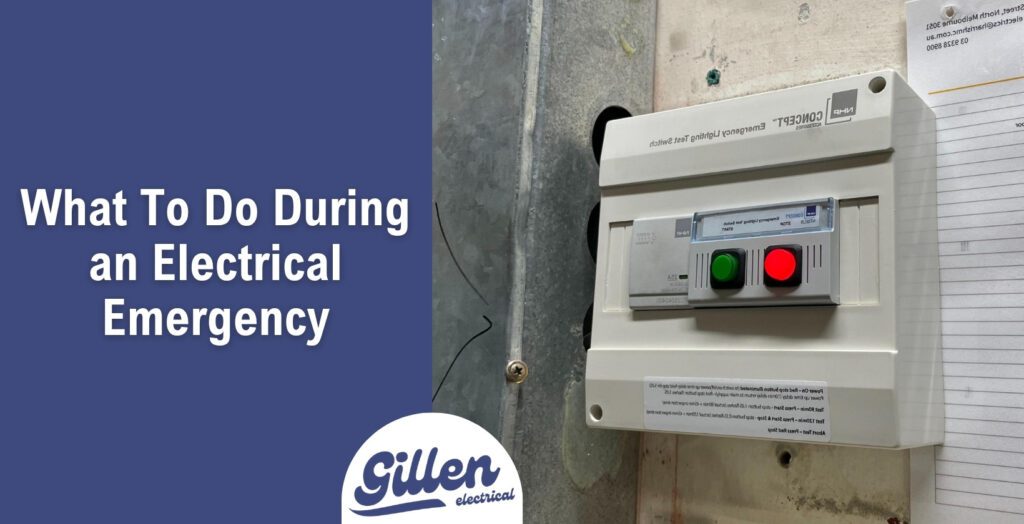You should turn off the power, avoid water on electrical fires, check the issue visually, avoid DIY, call a licensed professional, and take steps to prevent it from happening again. These actions stop hazards from escalating into major damage or injury.
Most cases are preventable with better habits and awareness, but immediate action always comes first. Electricians are trained to manage these risks, but what you do in the first few moments makes a difference.
This guide will discuss the steps to take during an electrical emergency, so you’ll know how and stop minor electrical hazards from becoming major problems.
6 Steps To Follow During an Electrical Emergency
Quick thinking and safe actions reduce risk before help arrives. These are the 6 steps you must follow during any electrical emergency:
Step 1: Turn Off The Power
Start by turning off the main switch at your switchboard. This cuts power to all circuits and prevents further damage or electrocution.
Avoid touching anything electrical if your hands are wet or you’re standing on a damp surface. Dry off first, wear shoes, and stay away from metal objects during shutdown.
This is one of the most basic but effective electrical safety tips you can follow in an emergency. Cutting power early buys you time and protects both people and property.
Step 2: Never Use Water On Electrical Fires
Water conducts electricity and makes electrical fires worse. Throwing water on an appliance fire can cause shock or even explosion.
Instead, reach for a fire blanket or a CO₂ extinguisher if you have one nearby. Only do this if the fire is small and your path is clear.
If flames spread quickly or you’re unsure, evacuate and wait for fire services. One common cause of electrical fires is safety switch tripping that goes ignored or is reset without inspection.
Step 3: Identify The Issue Safely
Look for signs like burning smells, flickering lights, or heat around switches and sockets. This helps narrow down the fault without risking contact.
Don’t go poking around in outlets or breaker boxes unless you’re qualified. Just observing from a safe distance is enough for now.
Keep others away from the affected area to stop further risk. If you find a melted plug or scorched socket, the circuit should stay off until inspected.
Step 4: Don’t Attempt Serious Repairs
Trying to fix exposed wires, damaged breakers, or hot outlets can get you killed. DIY repairs lead to more hazards if you miss a hidden fault.
You might also void insurance or cause further issues if the repair doesn’t meet standards. These faults require professional tools and know-how.
Stick to safe tasks like unplugging devices or moving flammable objects away — and leave everything else. Emergency electricians handle serious repairs with the right gear and testing methods.
Step 5: Call An Emergency Electrician
Once the area is safe, ring a licensed emergency electrician. Be ready to describe what happened, what you’ve done so far, and any warning signs.
This helps them bring the right tools and plan the repair quickly. Clear details speed things up and get your power back on safely.
Wait outside or in a room unaffected by the fault. Keep your phone nearby and leave the switchboard alone until they arrive.
Step 6: Prevent Future Emergencies
Book a switchboard inspection and test your RCDs every 3 months. If you’ve had frequent faults, ask about safety switch upgrades or arc fault detection.
Routine checks find wear and tear before it becomes dangerous. This is especially important in older homes or high-use environments.
Organise commercial or residential maintenance to keep everything compliant and safe. Good systems and habits prevent emergencies before they start.

